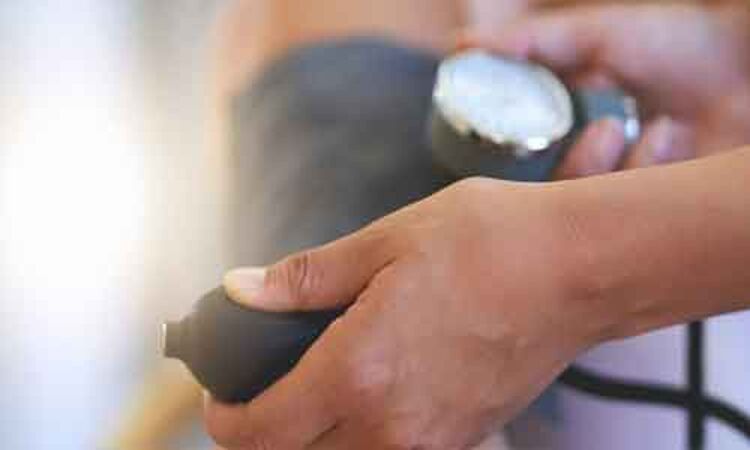- Home
- Medical news & Guidelines
- Anesthesiology
- Cardiology and CTVS
- Critical Care
- Dentistry
- Dermatology
- Diabetes and Endocrinology
- ENT
- Gastroenterology
- Medicine
- Nephrology
- Neurology
- Obstretics-Gynaecology
- Oncology
- Ophthalmology
- Orthopaedics
- Pediatrics-Neonatology
- Psychiatry
- Pulmonology
- Radiology
- Surgery
- Urology
- Laboratory Medicine
- Diet
- Nursing
- Paramedical
- Physiotherapy
- Health news
- Fact Check
- Bone Health Fact Check
- Brain Health Fact Check
- Cancer Related Fact Check
- Child Care Fact Check
- Dental and oral health fact check
- Diabetes and metabolic health fact check
- Diet and Nutrition Fact Check
- Eye and ENT Care Fact Check
- Fitness fact check
- Gut health fact check
- Heart health fact check
- Kidney health fact check
- Medical education fact check
- Men's health fact check
- Respiratory fact check
- Skin and hair care fact check
- Vaccine and Immunization fact check
- Women's health fact check
- AYUSH
- State News
- Andaman and Nicobar Islands
- Andhra Pradesh
- Arunachal Pradesh
- Assam
- Bihar
- Chandigarh
- Chattisgarh
- Dadra and Nagar Haveli
- Daman and Diu
- Delhi
- Goa
- Gujarat
- Haryana
- Himachal Pradesh
- Jammu & Kashmir
- Jharkhand
- Karnataka
- Kerala
- Ladakh
- Lakshadweep
- Madhya Pradesh
- Maharashtra
- Manipur
- Meghalaya
- Mizoram
- Nagaland
- Odisha
- Puducherry
- Punjab
- Rajasthan
- Sikkim
- Tamil Nadu
- Telangana
- Tripura
- Uttar Pradesh
- Uttrakhand
- West Bengal
- Medical Education
- Industry
Interval Training improves Blood Vessel Function in hypertensive men

Rockville, Md.— Researchers have found that men with high blood pressure may have reduced blood vessel dilation in the legs and that a form of high-intensity interval exercise training improves blood vessel function in this population. The study is published ahead of print in the American Journal of Physiology-Cell Physiology.
Essential hypertension—a type of high blood pressure that occurs without a known cause—is associated with an impaired ability of the blood vessels to dilate (also called vasodilation or vascular responsiveness). Relaxation of the smooth muscle cells play a role in vascular responsiveness. During exercise, cells in the blood vessels called endothelial cells release chemicals that aid in smooth muscle cell relaxation. Research has shown that exercise can be beneficial for blood pressure regulation. Studies have also found that people with hypertension have reduced vascular responsiveness in their arms, but little is known about the relationship between hypertension, exercise and vasodilation in the legs.
A research team from Denmark compared sedentary men with essential hypertension (average age: 59) to an age-matched control group without high blood pressure. Before the exercise training, the research team assessed the vasodilation response in the men's legs. They first infused sodium nitroprusside—a medication used to lower blood pressure by promoting vasodilation—into the femoral artery in the thigh. Afterward, the volunteers received an infusion of acetylcholine, a compound found in the nervous system that naturally dilates blood vessels.
The volunteers participated in supervised cycling sessions two to three times a week for six weeks. The sessions consisted of 10-20-30 training, where the volunteers cycled in one-minute intervals:
The first 30 seconds was at 30% maximal intensity,
followed by 20 seconds at 50% intensity, and
the final 10 seconds at 100% effort.
Each exercise session—lasting less than 20 minutes—consisted of five consecutive intervals followed by a three-minute recovery and another five-minute interval set. Heart rate was determined continuously during each session and blood pressure and blood flow to the legs were measured before and after the training period.
After the six weeks of training, the hypertension group showed marked improvements in blood pressure as well as vascular responsiveness in the legs. "These findings provide the first line of evidence in humans, that smooth muscle cell vasodilator responsiveness is reduced in the lower limbs of hypertensive men, and that an improved endothelial function can compensate for this impairment," the authors wrote. "Based on the present findings, the 10-20-30 training may be considered an attractive and simple exercise modality for men with essential hypertension."
For more details click on the link: https://doi.org/10.1152/ajpcell.00047.2020
Hina Zahid Joined Medical Dialogue in 2017 with a passion to work as a Reporter. She coordinates with various national and international journals and association and covers all the stories related to Medical guidelines, Medical Journals, rare medical surgeries as well as all the updates in the medical field. Email: editorial@medicaldialogues.in. Contact no. 011-43720751
Dr Kamal Kant Kohli-MBBS, DTCD- a chest specialist with more than 30 years of practice and a flair for writing clinical articles, Dr Kamal Kant Kohli joined Medical Dialogues as a Chief Editor of Medical News. Besides writing articles, as an editor, he proofreads and verifies all the medical content published on Medical Dialogues including those coming from journals, studies,medical conferences,guidelines etc. Email: drkohli@medicaldialogues.in. Contact no. 011-43720751


